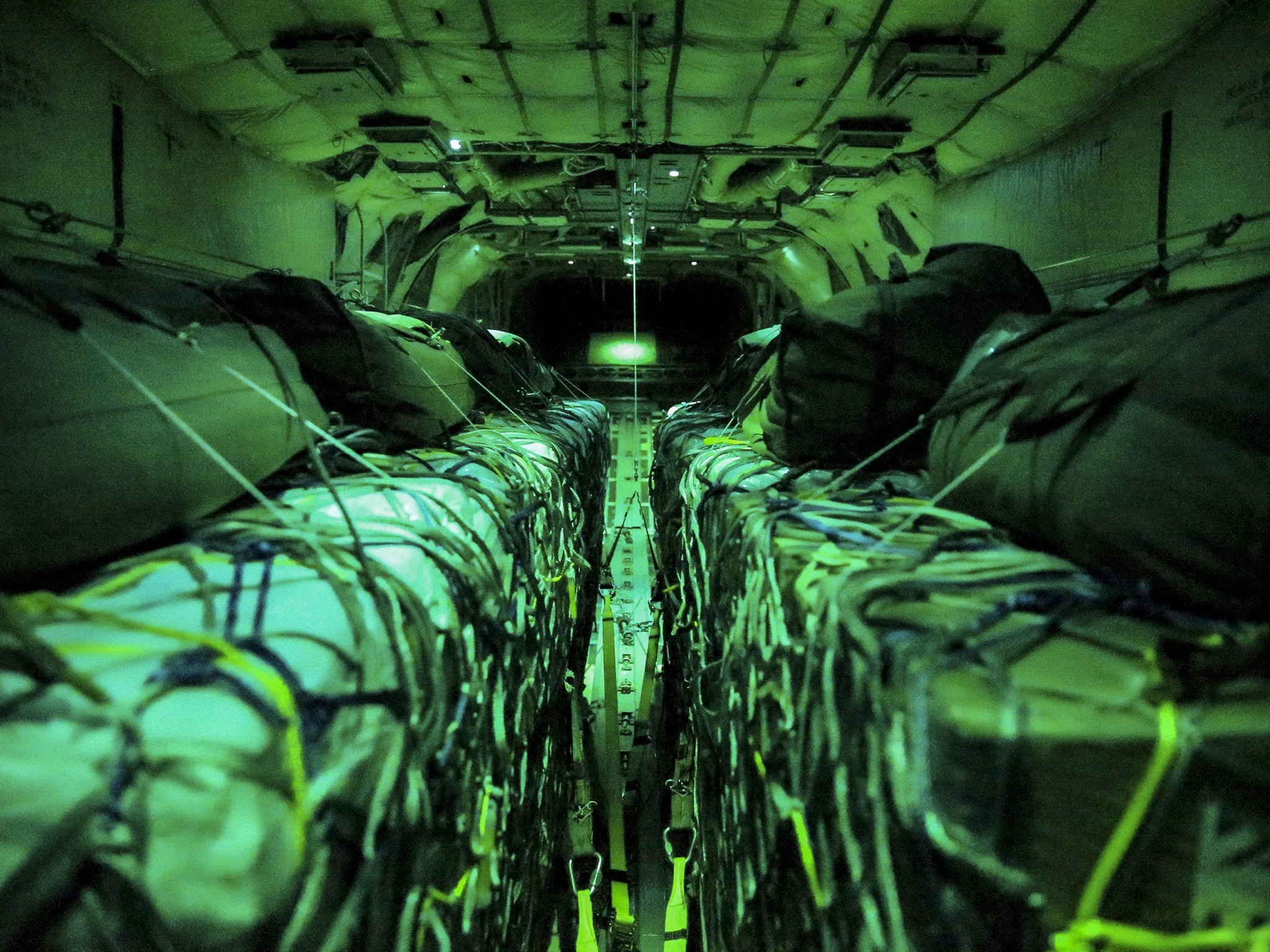My night on a perilous mercy mission to Mount Sinjar with the RAF
Flying low through the darkness, we faced a high risk of being shot down

It is before midnight on the airfield at RAF Akrotiri, and I am sitting in a Hercules C-130 aircraft, one of two which will carry out tonight's mission. Despite the size of the aeroplane, there isn't much space. Out of the dim green light loom the 8ft-high, plastic-wrapped blocks of the British aid effort in northern Iraq; 14 tons of fresh water, water filters and temporary shelters.
They have been thoughtfully packed by the RAF crews, who try to make the packages robust enough to survive the impact of a parachute drop, but accessible enough for people to get supplies which could mean the difference between life and death.
It's 700 miles from Cyprus to Iraq. Some time into the journey, I look out of the window and see another huge plane, flying just a few yards in front of the other Hercules. There's a cable connecting them. In-flight refuelling here is a ballet for behemoths.
About half an hour from the drop zone, there's the first sign that the mission is not without risk. The crew breaks out ammunition for their personal weapons. Being shot down or forced into an emergency landing in extremist-held territory, could put these men in a fight for their lives.
The pilots have a fiendish balance to strike. They want to fly as low as they can, to get the aid on the ground as quickly and accurately as possible. But that exposes the Hercules to the threat of anti-aircraft fire from Islamic State (formerly Isis) fighters. Tonight though, the Hercules has an advantage – RAF Tornado fighters are surveying the land ahead of them.
We are over Mount Sinjar. The crew leader holds up a hand. Five minutes. Parachutes have been fastened to the top of each block, and they are in turn attached to an intricate system of pulleys and clips designed to drag the canopies open as the packages roll out of the back of the aeroplane. It happens in seconds. The dark space to my left is suddenly full of the cream-coloured canvas of the parachutes, and then they are gone.
Somewhere in the blackness below, they will land in an area several hundred yards long. The crew is not given the satisfaction of seeing whether their delivery has reached the people for whom it was intended. The engines roar, and we are climbing away from the war zone. Three hours later, we're back on the tarmac in Cyprus. There are handshakes and smiles. Eyes are glazed with exhaustion and relief.
In the absence of an aircraft carrier, "force projection" is not something the British forces can do as widely as they once did. But from this Mediterranean outpost, founded 60 years ago to bolster a declining empire, these men reached out to a faraway mountainside, and did their best.
Geraint Vincent is Middle East Correspondent for ITV News
Join our commenting forum
Join thought-provoking conversations, follow other Independent readers and see their replies
Comments
Bookmark popover
Removed from bookmarks